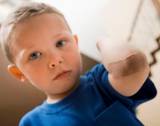Shop
01470
https://www.under5s.co.nz/shop/Hot+Topics+Articles/Babies+%26+Kids+Gear/Bed+and+Bath+Time/Tips+on+creating+an+eco+friendly+nursery.html
Tips on creating an eco friendly nursery
|
Creating an eco-friendly nursery for your baby is a lot easier these days. There are lots of ways to make sure the nursery is non-toxic, safe and sustainable, while still making it ultra chic and a great place for your baby to sleep in.
|
You might also be interested in ...
Bedtime routines for toddlers & preschool kids
In this article we take a look at some of the benefits of good bedtime routines for toddlers and pre-schoolers, why they're important and how to put a bedtime routine in place. We also share some ideas to help you establish your own bedtime routines and encourage healthy sleep habits for the future.
Removing plasters from kids skin
No-one likes having plasters removed from their skin, not even adults! This simple and effective method will help remove plasters quickly and easily, and with minimal pain from your kids skin.
join usJoin us on social media for all our latest news. |
sign upSign up and receive our latest newsletters. |
|







There are lots of ways to make sure the nursery is non-toxic, safe and sustainable, while still making it ultra chic and a great place for your baby to sleep in.
Tips on creating an eco friendly nursery
1. Walls
If the room you’ve chosen for the nursery is in need of a freshen up, do some research into the best eco materials on the market to suit your needs. There are a lot of safe paint options available now.
Use low-VOC (volatile organic compounds) or VOC-free paint to ensure the room is safe, and allow enough time to air out the nursery before your baby settles in.
Unfortunately if wallpaper is more your style, there are currently very limited options available in New Zealand. You may want to search online and see what you can buy from overseas.
A quick and easy solution is wall stickers! They are a healthy alternative and are easy to change as your baby gets older.
Remember babies grow up quickly, so try to think about their long term needs and incorporate them into your nursery design.
You’ll save money in the long run too!
2. Floors
Carpets are soft on your feet and offer much-needed warmth during the winter months. However they can become sanctuary for a nasty array of dust mites, allergens, dirt and bacteria.
When choosing a carpet for the nursery, look for one with natural fibres, such as wool, cotton or even hemp. Also ensure that the adhesives and underlay don’t contain petrochemicals or VOCs.
Carpet-free rooms, with timber flooring, bamboo or VOC-free lino are a good alternative. You can also add a rug to the nursery for additional warmth and colour to the room.
Carpet-free rooms are much easier to clean too!
3. Furniture & accessories
When you’re looking for nursery furniture, look for products that are made from certified sustainable wood or reclaimed materials with low-VOC or VOC-free paints and coatings, vegetable-based sealants and glues.
Have a look for items at local second-hand stores or online at places like Trade Me to help save money.
Where possible, use eco-friendly furniture and décor to accessorise and brighten up the room.
4. Bedding
Babies sleep a lot so it's important to make sure they're safe and comfortable.
Most conventional mattresses are made with chemical and synthetic products, such as highly flammable polyurethane foam, and doused with flame-resistant chemicals. These can be absorbed through your baby’s skin and inhaled as they sleep.
For a natural alternative, invest in a mattress made from natural fibres and free from harmful chemicals, such as organic cotton, latex or a naturally flame-resistant wool.
In terms of sheets and blankets, try to buy in long-lasting, eco-safe bamboo or organic cotton sheets and organic cotton or merino wool blankets.
Baby sleeping bags made from natural materials such as merino wool and organic cotton are another good sleeping option for your baby.
To help reduce skin irritation, buy laundry powders which do not contain bleach, whiteners, enzymes or phosphates.
These can contain irritants that remain in the sheets and blankets after you’ve washed them and can be absorbed into the body.
Tell your friends
Like the article you've just been reading? Click on the Refer A Friend link at the top of the page and send the details to friends who might like to read it too.More Hot Topics for you to enjoy:
- Helping kids to clean up their room
- Make an artsy lampshade for your kids' room
- Bedtime routines for toddlers and preschoolers
Image source: kidsomania.com